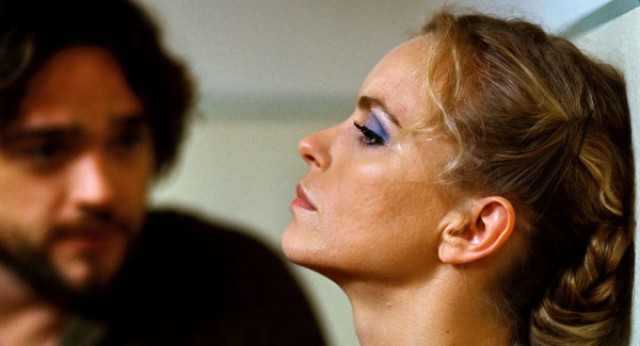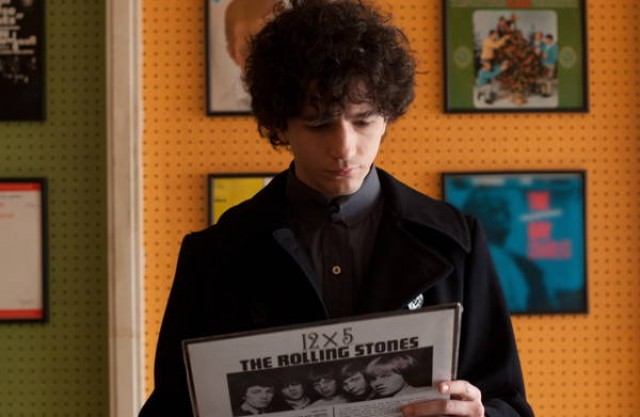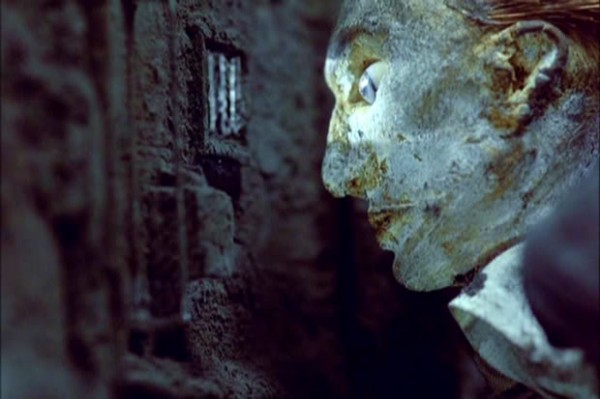
Career retrospective offers a dazzling look into the surreal world of the Brothers Quay (still from STREET OF CROCODILES, 1986)
Museum of Modern Art
11 West 53rd St. between Fifth & Sixth Aves.
Wednesday–Monday through January 7
Museum admission: $22.50 ($12 can be applied to the purchase of a film ticket within thirty days)
212-708-9400
www.moma.org
When MoMA Film associate curator Ron Magliozzi first approached twins Stephen and Timothy Quay about putting together a career retrospective at the Museum of Modern Art, the brothers weren’t sure why people would be interested in delving into their history and working process, but they opened their London studio to Magliozzi and helped design the appropriately strange and wonderful exhibit “On Deciphering the Pharmacist’s Prescription for Lip-Reading Puppets.” Similar in concept to the “Tim Burton” blockbuster a few years back, the Quay Brothers show is filled with paintings and drawings, film and video, early self-portraiture, photographs, collages, book and album covers, etchings, engravings, commercials, and other fascinating paraphernalia associated with their rather eclectic career, spread across several floors. Born in rural Pennsylvania in 1947 to a machinist father and homemaker mother, the Quays were heavily influenced by illustrator and naturalist Rudolf Freund, whom they met in the late 1960s; Polish poster art from the 1960s, which they saw in a 1967 exhibition at the Philadelphia College of Art; and avant-garde, experimental shorts by Jan Lenica and Walerian Borowczyk.
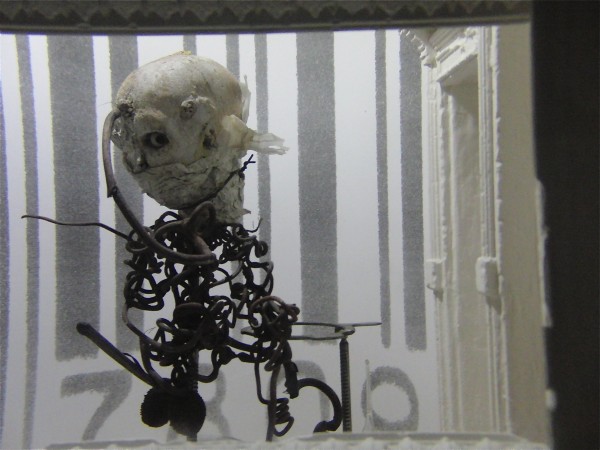
Quay Brothers, detail, “O Inevitable Fatum, Rehearsals for Extinct Anatomies, décor,” wood, fabric, glass, metal, 1987 (photo by twi-ny/mdr)
The MoMA show is set up like a labyrinth, with treats around every corner, from oil snowscapes done when the brothers were still in single digits to short films made when they were in school, from the creepy Black Drawings of the mid-1970s and stage designs for opera, theater, and dance by Béla Bartók, Eugene Ionesco, Molière, Sergei Prokofiev, Georges Feydeau, E. T. A. Hoffman, and others to their British television documentaries, made with longtime producer Keith Griffiths and including the absolutely insane documentary Igor, the Paris Years Chez Pleyel, in which paper cut-outs of Bolshevik poet Vladimir Mayakovsky, French writer and filmmaker Jean Cocteau, and Russian-born composer Igor Stravinsky hang out and do rather odd things in Paris. All of these works lend intrigue and insight to the primary sections of the exhibition, dedicated to the marvelous short films the Quays are renowned for, dark, dazzling stop-motion animations with puppets that relate mesmerizing tales set in a mysterious world of dreams and nightmares that delve into the subconscious. The Quay Brothers’ breakthrough came in 1986 with Street of Crocodiles, adapted from a Bruno Schulz short story, starring eyeless puppets with open heads and taking place in a Kinetoscope, featuring themes and elements that appear in many of their films, including machines, thread, scissors, repetitive movement, screws, bones, metal shavings, and aching, experimental music. Getting its own room, the film is followed by a two-minute outtake that has never been shown before. Among the many other classic Brothers Quay shorts on view in the galleries are In Absentia, The Cabinet of Jan Svankmajer, Rehearsals for Extinct Anatomies, The Sandman, and the dazzling color films This Unnameable Little Broom and The Comb (from the Museums of Sleep). Downstairs outside the Titus Theaters is “Dormitorium,” a terrific collection, previously seen at Parsons the New School for Design in 2009, of film décors, glass-enclosed sets from many of the above-mentioned films as well as many others. And on the first floor by the up escalator you can find “Coffin of a Servant’s Journey,” a short film inside a coffin that can be watched by only one person at a time.
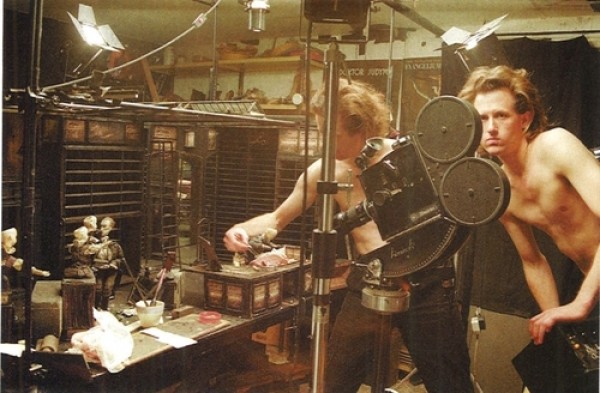
Quay Brothers, “Quay Brothers self-portrait,” photographic enlargement (Atelier Koninck QbfZ)
“On Deciphering the Pharmacist’s Prescription for Lip-Reading Puppets” is a magical trip inside the bizarre, surreal world of the Quay Brothers, an exhibition that was a long time coming and has been handled splendidly. It’s also an exhibition that requires a lot of time to be properly enjoyed, so don’t rush through it or you’ll miss so many of its myriad hidden treasures. And as far as the title itself goes, we’ll leave that to the Quays to describe themselves, as they do in the catalog in a faux interview with sixteenth-century composer Heinrich Holtzmüller: “In our mind it’s more of a teasing inducement for a journey. Not a grand journey but a tiny one . . . around the circumference of an apple. We’re no doubt gently abusing the anticipation that the prescriptive side is courting both a rational illegibility as well as an irrational legibility. Hopefully the intrigued will engage with the ambiguity. And besides, the prescription is only mildly inscrutable and one certainly won’t die from it, considering that thousands of people a year reportedly die from misread prescriptions.” You were expecting anything different?
(MoMA will be screening the Quay Brothers’ latest full-length film, Franz Kafka’s The Metamorphosis, on January 6-7 in Titus Theater 1, with a live musical score performed by Mikhail Rudy. Also on January 7, “The Essential Shorts, Part 2” will screen six shorts in the Education and Research Building, including Rehearsals for Extinct Anatomies, Nocturna Artificialia, Ex Voto, This Unnameable Little Broom: Epic of Gilgamesh, Maska, and Bartók Béla: Sonata for Solo Violin.)




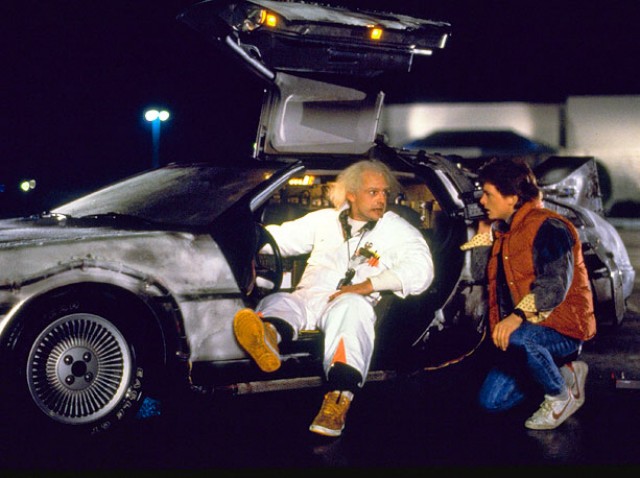
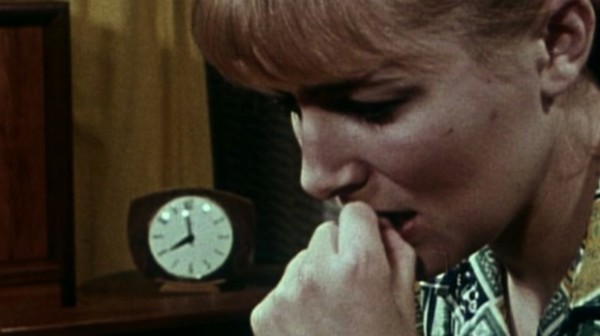
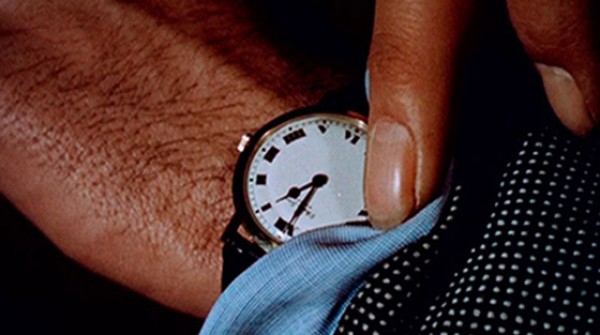
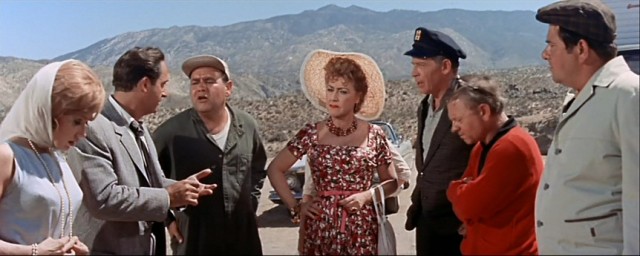
 They don’t come much crazier than the madcap 1963 comedy It’s a Mad Mad Mad Mad World. Producer-director Stanley Kramer takes a sharp turn with the wacky film, clearly needing a laugh following his rather serious string of issue pictures: The Defiant Ones, On the Beach, Inherit the Wind, and Judgment at Nuremberg. As he lays dying after a car crash, master thief Smiler Grogan (Jimmy Durante) tells a group of onlookers that there is $350,000 buried under a “big W” in Santa Rosita State Park. And off they go in search of the prize, willing to do just about anything and everything in order to get their greedy hands on the money. Hot on their trail is police captain T. G. Culpeper (Spencer Tracy), trying to solve one last case before he retires. It’s a Mad, Mad, Mad, Mad World lives up to its title, a mad, mad, mad, mad epic featuring the greatest all-star comedic cast ever assembled, including Sid Caesar, Edie Adams, Mickey Rooney, Buddy Hackett, an absolutely lunatic Jonathan Winters, Terry-Thomas, Phil Silvers, Dick Shawn, Peter Falk, Eddie “Rochester” Anderson, and Ethel Merman in addition to cameos by Jerry Lewis, Jack Benny, Joe E. Brown, Howard Da Silva, Andy Devine, Norman Fell, Selma Diamond, Leo Gorcey, Jim Backus, Marvin Kaplan, Stan Freberg, Arnold Stang, Jesse White, Carl Reiner, Don Knotts, Buster Keaton, and the Three Stooges. Basically, you can’t blink during the film’s 161 minutes or you’ll miss someone or some incredibly silly slapstick moment. And the ending is a laugh riot — literally. It’s a Mad, Mad, Mad, Mad World is screening December 22 and December 28 as part of the Film Society of Lincoln Center series “See It in 70MM!,” comprising fifteen films being shown in their original 70mm glory, beginning December 21 with Stanley Kubrick’s 2001: A Space Odyssey and continuing through January 1 with such other works as Ron Fricke’s Baraka, John Ford’s Cheyenne Autumn, Kenneth Branagh’s Hamlet, Basil Dearden’s Khartoum, Richard Brooks’s Lord Jim, and Jacques Tati’s Playtime.
They don’t come much crazier than the madcap 1963 comedy It’s a Mad Mad Mad Mad World. Producer-director Stanley Kramer takes a sharp turn with the wacky film, clearly needing a laugh following his rather serious string of issue pictures: The Defiant Ones, On the Beach, Inherit the Wind, and Judgment at Nuremberg. As he lays dying after a car crash, master thief Smiler Grogan (Jimmy Durante) tells a group of onlookers that there is $350,000 buried under a “big W” in Santa Rosita State Park. And off they go in search of the prize, willing to do just about anything and everything in order to get their greedy hands on the money. Hot on their trail is police captain T. G. Culpeper (Spencer Tracy), trying to solve one last case before he retires. It’s a Mad, Mad, Mad, Mad World lives up to its title, a mad, mad, mad, mad epic featuring the greatest all-star comedic cast ever assembled, including Sid Caesar, Edie Adams, Mickey Rooney, Buddy Hackett, an absolutely lunatic Jonathan Winters, Terry-Thomas, Phil Silvers, Dick Shawn, Peter Falk, Eddie “Rochester” Anderson, and Ethel Merman in addition to cameos by Jerry Lewis, Jack Benny, Joe E. Brown, Howard Da Silva, Andy Devine, Norman Fell, Selma Diamond, Leo Gorcey, Jim Backus, Marvin Kaplan, Stan Freberg, Arnold Stang, Jesse White, Carl Reiner, Don Knotts, Buster Keaton, and the Three Stooges. Basically, you can’t blink during the film’s 161 minutes or you’ll miss someone or some incredibly silly slapstick moment. And the ending is a laugh riot — literally. It’s a Mad, Mad, Mad, Mad World is screening December 22 and December 28 as part of the Film Society of Lincoln Center series “See It in 70MM!,” comprising fifteen films being shown in their original 70mm glory, beginning December 21 with Stanley Kubrick’s 2001: A Space Odyssey and continuing through January 1 with such other works as Ron Fricke’s Baraka, John Ford’s Cheyenne Autumn, Kenneth Branagh’s Hamlet, Basil Dearden’s Khartoum, Richard Brooks’s Lord Jim, and Jacques Tati’s Playtime.